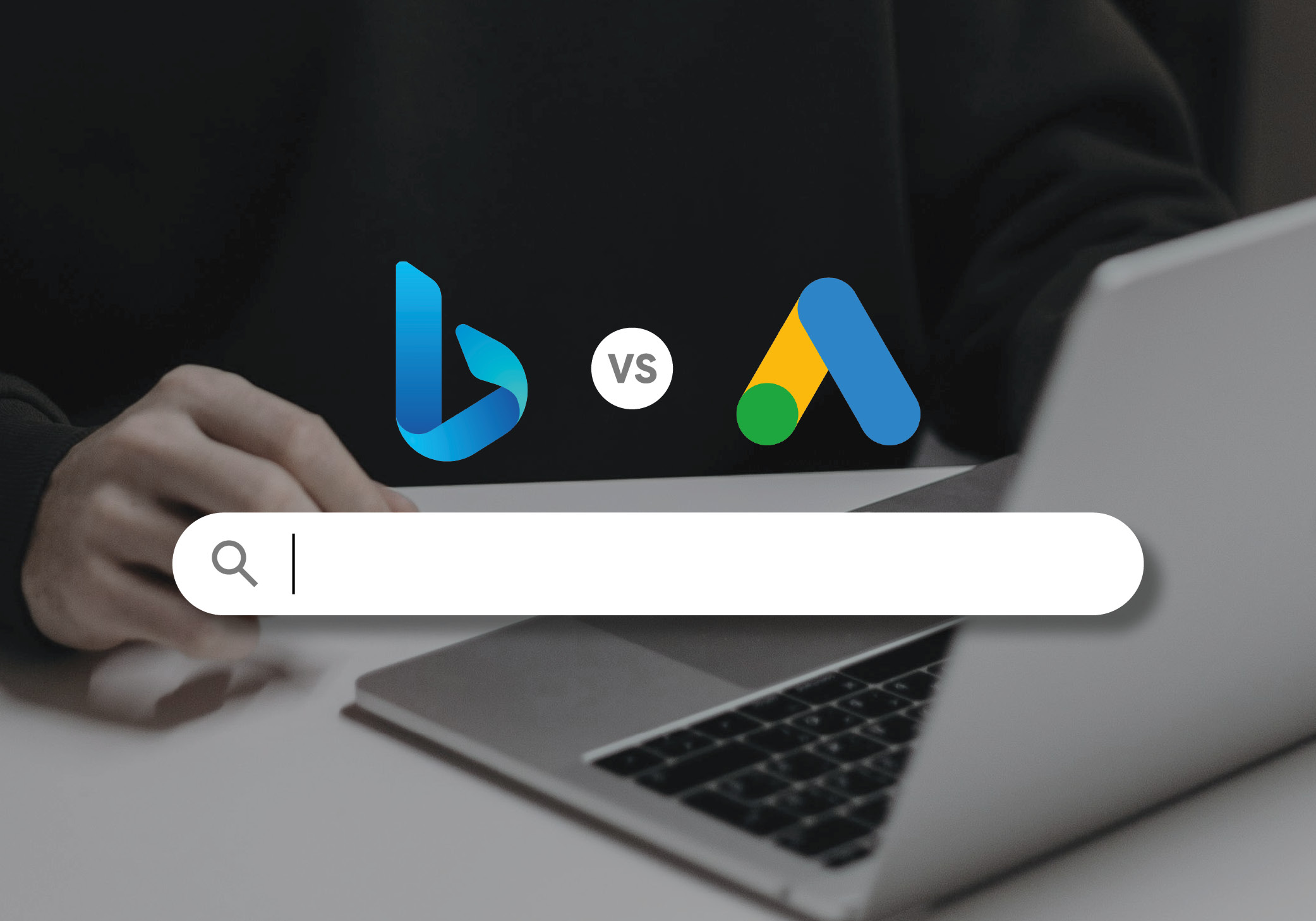Search engines have revolutionized the way we navigate digitally. Google and Bing are two of the leading search engines in the digital space. Each has its own features and a unique history. Microsoft Bing, powered by AI, is reshaping the search engine landscape. While Google dominates the market, its innovations are changing it.
Understanding the nuances of these giants is essential for digital marketers. Each platform has different algorithms, ranking factors, and user bases that can have a significant impact on your SEO strategy. Marketers can increase visibility, reach more people, and drive more traffic by tailoring their content to each search engine’s unique characteristics.
This blog will explore the evolution of search engines and their features. It will provide valuable insights for your digital marketing efforts.
Google and Bing: A Brief History
In 1998, Larry Page and Sergey Brin launched “PageRank,” an innovative system that ranked websites based on the number and quality of links that pointed to them. This innovation helped Google achieve its dominant position in the market.
Digital marketers must understand Google and Bing. Microsoft entered the race for search engines after Google’s dominance. MSN Search was rebranded to Live Search in 2006. Bing was launched in 2009. Bing has evolved since then, integrating new features and leveraging the latest technology. Marketers need to understand both platforms to reach their audiences effectively.
Market Share: Google and Bing
Google’s overwhelming dominance in the search engine market is evident, with an impressive 90.91 %% market share. Bing’s Bing AI Search holds a modest 3.64%. However, Microsoft’s AI Technology is making waves and suggesting a possible shift in the landscape.
Bing is gaining traction in certain user demographics and even regional markets. Bing’s growth, largely due to Microsoft Bing AI and Microsoft chatbots, highlights the importance of optimizing both platforms.
User Experience and Interface Design
Google and Bing both aim to offer intuitive, user-friendly interfaces. However, they differ in some key aspects as shown below.
Search Results Page Layout
Google’s search results are simple and clear, giving users quick access to relevant information. Bing offers a more visually appealing experience, with prominent image and video options and a sidebar that provides additional information. This design is especially appealing for queries that are image-heavy, travel-related, or entertainment related, particularly when optimized for multimedia content.
Search Options for Advanced Search
Google’s advanced searches offer a variety of operators that allow users to refine their results and conduct more sophisticated searches. Bing’s simple search options are well-known for their simplicity. Bing is integrated seamlessly with Microsoft’s products, whereas Google uses Android-based devices. Both platforms provide filters, tools and customization options for users of different needs.
The Algorithmic Battle – Ranking Factors & SEO
Google and Bing use complex algorithms that have many ranking factors in common. They differ in their emphasis and implementation, which is something that digital marketers should consider.
Considerations for On-Page SEO
Google and Bing use slightly different techniques for optimizing web pages. Google emphasizes the use of natural language and comprehensive content to answer user queries. Google is less dependent on exact-match keywords and focuses more on topic relevance. Using the best keyword research tool will help you identify the terms that are most relevant to both search engines. Bing, on the other hand, gives more weight to traditional on-page elements such as keywords in headers, titles, and content.
Here are some tips to optimize your content for both search engines:
- Use exact-match keywords in your titles, meta descriptions, and content.
- Create in-depth, comprehensive content that covers all topics.
- Use phrase-match keywords to optimize header tags (H1, H2, H3), particularly for Bing.
- Make sure your meta descriptions are engaging and include the target keywords.
- Use alt text to describe images and include relevant keywords.
Technical SEO and Site Structure
Both engines are interested in good technical SEO, but their approaches differ.
Google gives more importance to Core Website Vitals, site speed, and mobile-friendliness. Google is also very particular about the use of canonical tags and clean URL structures. Bing is tolerant of minor technical problems, but still appreciates a well-structured website. Bing also values XML sitemaps, as well as clear internal links.
Both platforms need a crawlable site structure. Consider the following:
- Make sure the site has a clear and logical structure.
- Search engines can better understand your site hierarchy by using breadcrumbs.
- Use internal links to help distribute page authority.
- Ensure your robots.txt file doesn’t block important content.
- Keep a flat website architecture so that you can easily access all pages from your homepage.
Understanding these differences in algorithmic approach and using a balanced SEO strategy, digital marketers are able to optimize their website to perform well both on Google and Bing. This will maximize their visibility throughout the search landscape.
AI and Machine Learning for Search
MUM and BERT have improved their ability to understand complex queries. Bing AI and Microsoft chatbots provide a more conversational, interactive experience.
Natural Language Processing Capabilities
Both search engines have made great strides in the field of natural language processing. Google is better at understanding context, user intent, and language across all languages. Bing’s recent AI integration allows more conversational interaction. It is important to create content that is both natural and aligned to user intent in order to achieve success on both platforms.
These developments have highlighted the importance of creating content that is both natural and addresses user intent in a comprehensive manner. Content must be tailored to each search engine’s unique understanding of and processing of natural-language queries. It ensures that content is created and optimized in a way that’s more effective for search engine performance.
Personalization and User Intent
Digital marketers should not focus on keyword density but rather comprehensive coverage of topics to optimize AI-driven search experiences. Create content that addresses user queries and also fulfills their intent. Prioritize voice searches as well as conversational queries in order to adapt to changing search behaviours.
Advertising Platforms: Google Ads and Microsoft Advertising
Paid advertising is a key component of digital marketing, and both platforms offer a wide range of options for targeting specific markets.
Ad Performance and ROI
Google Ads has a wider reach and more targeting options but the cost per click is often higher due to increased competition. Microsoft Advertising, although it reaches a smaller audience than Google Ads, has lower CPCs. It can also provide a better ROI for certain industries or demographics.
Consider tailoring your strategies so that you can take advantage of the extensive reach and targeting abilities of Google Ads, while also taking advantage of Microsoft Advertising’s lower cost per click and potential for high returns in certain market segments.
Remarketing and Audience Targeting
Both platforms offer sophisticated options for audience targeting. Google’s network is extensive and covers platforms such as Facebook and Instagram. Microsoft Advertising, on the other hand, stands out for its seamless integration with platforms such as LinkedIn. This makes it a valuable B2B marketing tool.
It’s important to tailor strategies according to the audience characteristics and behaviours of each platform in order for remarketing campaigns on each platform to be as effective as possible. Advertisers can leverage the strengths of Google’s large network and Microsoft’s B2B targeting via LinkedIn integration to create remarketing campaigns that engage their target audience across multiple touchpoints.
Visual Search and Multimedia Content
Both Google and Bing offer excellent image recognition and visual searching capabilities. It is important to optimize multimedia content for both search engines in order to reach a diverse audience.
Google Images is the leader in visual search thanks to its powerful image recognition and visual search capabilities. Users can perform visual searches seamlessly, allowing for a large reach and a variety of multimedia content optimization options. The platform is an essential tool for digital marketers who want to engage their audiences with compelling visuals.
Bing also offers impressive image and video searches, with a layout that is visually appealing and tailored to certain content types. Users can search images, look for similar images and shop products that are featured in the images. Also, users can use descriptive file names, alt text and surrounding text to provide context, as well as create engaging video content, with optimized thumbnails, descriptions, and schema markup.
Privacy, Data Usage, And User Trust
Google and Bing both have privacy concerns about data collection. Google is more concerned about privacy due to the vast amount of data that it has collected via its products. The company has improved privacy settings by adding features such as incognito mode and clear privacy settings. It also made promises to protect user data.
Bing, which was rebranded as part of the Microsoft Corporation, has been marketed to be a privacy-conscious web browser. Microsoft has made an effort to prevent tracking in Edge, and it collects less data than Google. This can be a good option for users who want to maintain their anonymity when performing a certain activity.
Digital marketers must balance personalization and privacy concerns. There are many strategies to address privacy concerns.
- Transparency in Data Collection and Use: Companies must be transparent with their users about the data they collect, what it is used for, and to whom it will be disclosed. This builds trust and allows users to make informed privacy decisions.
- Offer Value in Exchange for User Data: It is worthwhile to consider offering valuable products or services as a way to exchange user data. It could be personalized recommendations, discounts, or exclusive content.
- Implementing Robust Data Protection Measures: Companies must invest in robust measures to protect data against unauthorized access. This includes encryption and secure storage practices. Regular security audits are also important.
- Respecting the Privacy Preferences of Users: Users should be able to set their privacy preferences easily and have options to personalize experiences based on consent. It could be opting out of targeted advertising or changing the level of personalization of their experience.
The Conclusion of the Article is:
Google vs Bing highlights the strengths and features that each search engine has, showing their importance in the digital world of today. Google’s dominance is based on its vast user base and cutting-edge machine-learning algorithms. It also has a robust advertising platform. Bing, however, is gaining ground thanks to its AI-driven innovations such as Microsoft Bing AI, Microsoft chatbots, and Microsoft Bing AI.
Digital marketers must understand the nuances of each platform, from user intent to SEO technical strategies. This is crucial for creating effective campaigns. By incorporating dofollow links, optimizing multimedia content, and leveraging SEO and social signals, you can boost visibility and engagement by optimizing for both search engines. Staying ahead of the curve will be crucial to maintain a competitive advantage as Bing AI continues to develop and Google’s AI capabilities grow.
A balanced and informed approach to both SEO and advertising will help your brand reach its full potential within today’s search engine landscape.
Are you ready to dominate Bing and Google? TechWyse Internet Marketing will help you achieve search engine success. Our SEO specialists will create a customized strategy to maximize visibility on both platforms.




